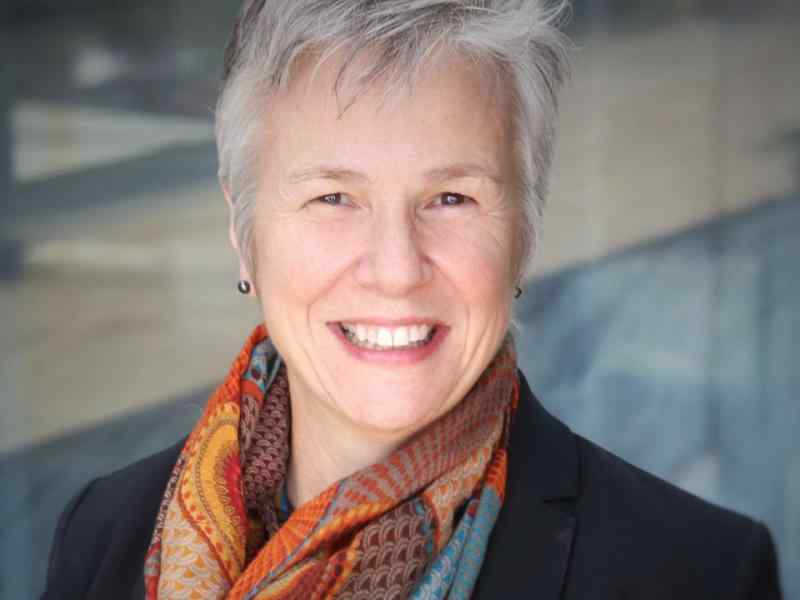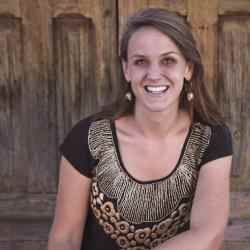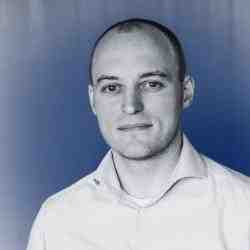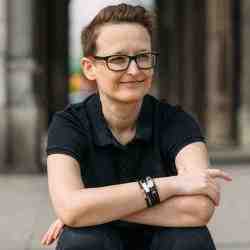Genetic Alliance
We empower communities to conduct health research and serve their members. We are diagnosing the world's undiagnosed.
http://www.geneticalliance.orgIntroduction
Sharon Terry is improving health outcomes for patients who have genetic diseases by aligning incentives and structures so that they facilitate, rather than obstruct, the continuum of research, drug development, treatment, advocacy, and support.
The New Idea
Sharon believes that meaningful progress in policy, health care, and research requires a patient/parent network in partnership with scientists, industry and policy makers. Sharon bridges the gap between science and the health needs of society by enabling parents and patients living with genetic conditions, science, government, industry and the citizen sector to collaborate in the development of treatments for rare and neglected genetic diseases. Her goal is to create systems that catalyze communities of scientific excellence, healthcare equity, and effective systems speeding the translation of knowledge gained in the laboratory into medicines. In the process, she unites the genetics community around shared goals and resources, and shifts the tenor (and action) of the community from staid advocacy to proactivity and changemaking.
The Problem
The community of people affected by genetic diseases numbers in the millions globally. In the United States where Sharon and her primary team live, many of these diseases are rare. “Rare” diseases number about 6,000 and effect fewer than 200,000 people nationwide. These groups include PXE, the disease that about 12,000 Americans (including Sharon’s two children) have, as well as many commonly known – yet technically still rare – diseases such as sickle cell anemia, diabetes, Parkinson’s, and Cystic Fibrosis. Even Alzheimer's is a borderline case.
People who have a rare genetic disease – and their families – offer tremendous energy and also funding to the effort to identify genes and develop treatments. Their advocacy is an essential resource. Yet Sharon believes that the nature of advocacy in the past has contributed to inefficiencies in the development and delivery of treatments. Hundreds of individual disease advocacy groups, often led by families battling against time to find cures, contribute to a fragmented approach and agenda, often competing against each other. Finally, people with rare diseases have an absolutely necessary contribution to finding cures – their DNA – but they are not organized in ways to support, proactively, drug development. Families often have legitimate concerns about what to do with their tissue and blood, how to ensure patient confidentiality, how to avoid discrimination by insurance providers and employers. These concerns contribute to fear and confusion as families wrestle – often in isolation and with little medical or legal training – to make best decisions singly, much less as a disease community.
Fragmentation and inattention to the whole disable the research community as well. Most research scientists in the U.S. – those working in university labs, or within industry – want to contribute to better health outcomes, yet the field’s discipline, protocol, and incentives disallow, rather than encourage, cooperation across research teams. Sharon observes that these silos slow progress to cures. The recent proliferation of patents of genes further compounds the problem. Roughly 10,000 genes are now patented. Of these, seven out of ten is “owned” by a university – most by Harvard University and the University of California system in the United States. Very often, the discovery of a gene in one lab means restrictions (and cost) for other research teams. Some companies that are patent-holders for genes charge significant licensing fees to researchers who use or work on that gene – another example of a disincentive to sharing. Furthermore, only a small percentage of NIH-funded medical research yields positive results that end up in publications. Developing a culture of sharing research results transparently is essential to reaching cures faster. When aggregated and accessible, even negative results can show the way forward to better, faster cures and treatments.
Finally, pharmaceutical companies have little or no incentive to support drug development for rare genetic diseases. These disease groups do not promise blockbuster returns. In the last 25 years, only 200 diseases have treatments. Enormous financial and time expenditures are associated with prioritizing disease groups, and finding and enrolling patients who can contribute to the initial research. Sharon sees that some of these expenditures can be averted through proactive citizen efforts, given the right alignment of industry and consumer interests, and that new blended financing can be used to advance treatments and cures.
The Strategy
Sharon recognizes that developing disease treatments requires alignment in pursuit of a larger goal. For better science, better policy, and better outcomes, she convenes disparate stakeholders, directing all players to set aside their intellectual property, and declare at the outset their conflicts of interests. Parents of children who have a rare disease have a strong interest that can impede faster cures overall; researchers and industry players also have entrenched interests. Publicly owing up to, then setting aside, these interests gets people into a discussion with Sharon, her team, and the increasingly broader group of parents and professionals she engages. (When unveiling new initiatives, Sharon sometimes ends the session by saying that the person you most want not to tell should be the next person you draw into the discussion.) Working across fields where egos, profit motives, and single disease interests are strong, this groundwork and values alignment is key.
Sharon sees that the design of overarching architecture and tools – including financial and policy tools – must first address the aggregate in order to overcome the inefficiencies that silos create. She arranges incentives to encourage all to embrace the whole. This applies to actors along the continuum from disease, to genomic discovery, to drug development. Translated to a policy realm, for example, Sharon is leading the effort to dissolve the current system of funding single disease research through congressional earmarks (totaling $24 million), and is instead encouraging the U.S. Congress to fund the research agenda of rare disease groups as a whole. This shift would create new resources and a national agenda that encourages sharing across genetic disease groups and the adoption of new criteria for advancing cures – based on science (not politics), and numbers of people affected.
Sharon redefines citizen advocacy in this realm so that patients and their families share in the solution and work together to build a common community, set of practices, and agenda to aid in the development of treatments. Genetic Alliance, the organization she has lead since 2004, now comprises 10,000 health-focused member groups in the United States. Sharon and her team have equipped the community with easy-to-use shared digital tools, such as email listservs and wikis. Users can reference a vast array of information about rare diseases. For the patient with a rare disease – or, more usually, the parent – this is an invaluable information portal and platform for participation that links science and research with health consumers, and creates a community that is equipped to proactively move research forward. Users can look up a disease, and connect with a group of families sharing the disease; review a simple, informative primer on how genetic diseases happen; connect to and participate in projects that yield advances in research, from family history projects to contributing blood and tissue samples to the advocacy-owned BioBank Sharon founded, a repository for biological samples and clinical data that is consumer-owed and available to select researchers. Sharon also sees, and is realizing, a global community of practice around her work. She has helped to set up and equip advocacy-owned biobanks in South Africa, Brazil, and China, and sees real potential to harness the power of citizen participation in drug development globally.
Furthermore, Sharon sees that informed consumers create a favorable climate for the early adoption of new products that result from academia, biotechnology, and pharmaceutical organizations. A new project Sharon is co-leading with Francis Collins takes advocacy, research, and new systems approach to enhanced therapies for rare diseases. Initial outcomes of this project will include 1) highly streamlined, integrated, and open-source databases and other disease characterization and information resource channels, delivering a virtual web of interrelated and coordinated resources to all interested parties, with standards for content, quality and usability developed by the CDC; 2) much needed patient cohort recruitment/expansion through new networking technologies and other technologies, with secure privacy protections, that lead to expanded biobanks, enhanced natural history study tools, accelerated clinical trial preparation, and biomarker development; 3) development of standards for screening and assay protocols; and 4) agreements to allow companies to assume intellectual property if they make an investment to take a potential therapy through to actual drug development. These outcomes set the stage for greatly accelerated development of therapies for rare and neglected diseases, and do so while building in willing participation among patients.
Sharon recognizes that the transparency she promotes must be met with protections for consumers. Better policies are needed to protect people with rare diseases, and to promote, rather than undermine, an open approach to sharing information that can lead to better treatments. For example, Sharon and Genetic Alliance played a key role in advancing the Genetic Information Nondiscrimination Act (GINA), passed in May 2008. GINA, which makes unlawful the practice of genetic-based discrimination by employers and insurance companies, had been debated for over a decade. With significant steering from Sharon and Genetic Alliance, it finally passed 414 to 1 votes in the U.S. House of Representatives and unanimously in the Senate.
While she is focused in the short-term on rare disease groups, Sharon sees tremendous potential to apply the lessons learned to neglected diseases and indeed to the shift in medicine to “personalized treatment,” a new field of medicine that seeks to, with greater precision, target a subset of any major disease group to render better treatments. In effect, the shift to personalized medicine recreates the rare disease silo problem, and will need applied solutions like those she is pioneering to overcome it.
The Person
Sharon was raised in northeastern United States. Even as a child and young person, she was drawn to elemental truths, and studied geochemistry and theology – “God and rocks!,” she says. Later as a mother of two young children, she was a college chaplain and science education innovator in the Boston area, securing Museum of Science space and resources to support home-schooling families – all prior to the life-changing day in December 1994 when she and her husband Patrick learned that both children, then five and seven, had pseudoxanthoma elasticum, a rare genetic disease. PXE causes elastic tissue to become mineralized in the skin, eyes, and other organs, including the heart, and typically renders affected people blind or severely vision-impaired by their early thirties.
In the weeks and months that followed the diagnosis, Sharon and Patrick, a draftsman, devoured every resource they could hunt down on PXE, trying to understand what was known, what wasn’t, its trajectory, and any possible ways they could advance a cure or treatment. They worked tirelessly. Outsiders to the medical community, and unaffiliated with any university, they encountered trouble simply accessing information, despite the fact that they – parents of diagnosed children – had the most vested interest in what was happening. Then, upon learning more about how research was organized, they saw that even those in the know – in other words, research teams – faced and propagated an enormous information gap as well. Teams did not know each other and, worse, were incentivized to work in silos, without sharing research findings. Everywhere Sharon and Patrick looked they saw that the system did not support best outcomes for consumers.
With research behind them, they turned to doing something. As they considered each action, Sharon worked to ensure that each tool they built would be scalable to establish systems for other diseases. Working first in the PXE-specific realm, Sharon and Patrick established new alignment among researchers and pointed everybody in the same direction: finding the gene, so they could find a cure. They also figured out who else had PXE and wove together the patient community globally. (There is a large patient cluster in South Africa.) They founded PXE International and set up a repository for tissue and blood, so that research and drug development could move quickly when other pieces fell into place. Sharon stepped up to the bench and, working with researchers, found the PXE gene. (She is the only non-researcher lay person to hold the IP for a gene. She calls herself a “steward of the gene,” ensuring that the consumer community (her children and others with PXE) may guide its use, enabling research to go unrestricted by intellectual property and allowing coordination not otherwise possible.)
By 2004, Sharon understood the bigger picture and recognized the need on the consumer/parent side to achieve the same coordination and aggregation she sought among researchers. This was a key moment when she passed from advocacy to systems-change. She took lessons learned from PXE and applied them to an aggregate group, co-founding Genetic Alliance Biobank, a centralized tissue and DNA repository to enable translational genomic research on multiple rare diseases. Six disease advocacy groups are founding members of the BioBank, which provides the physical repository and all the infrastructure for each of these small groups to enter the arena of clinical research, a complicated and expensive undertaking that none of these groups would have the wherewithal to tackle on their own. The creation of the BioBank, the first consumer-owned and -managed biobank, was a pioneering step.
In 2005, Sharon stepped into the lead role at Genetic Alliance, then a sleepy organization with a staff of three, stuck in the old adversarial mold that had characterized patient advocacy for decades. Guiding a deep change process more challenging than starting from scratch, Sharon has grown Genetic Alliance to 20 staff and $3.5 million, from 100 single disease groups to 1,000, and more than 10,000 health related organizations overall. She has transformed the tenor, efficacy, and reputation of the organization. She started hiring changemakers in all roles, and restructured the parent-advocacy Board, forming in its place a diverse Council of geneticists, parents, and industry representatives. Sharon uses Genetic Alliance as a main platform for pursuing the various initiatives that the moment and field require. She has moved the Biobank to the GA platform to live among its family of organizations.
Sharon and Patrick Terry live in the Washington, D.C. area. Aside from skin and eye lesions that continue to progress, their children are healthy and draw a strong sense of identity from the global community that the family has, together, built."My children are my biggest teachers," Sharon says. A cure or treatment has not yet been developed for their condition.

 Tile image
Tile image Tile image
Tile image


